
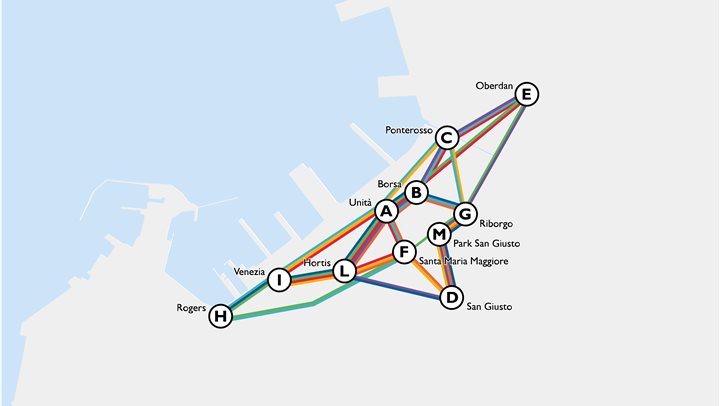

TRIESTEMETRO traces 7 routes dedicated to as many themes and aspects of the city’s culture.
Along each line you will find the exits that lead to in-depth itineraries and you can decide from time to time whether to take them or continue on your way.
Discover the heart of the city on the 100 street totems, visit the website (triestemetro.eu), download the augmented reality mobile app that will guide you along the routes, consult the pedometer with advice for your health and collect the information leaflets at info points, museums and libraries.
Like a subway but on foot, with health benefits.
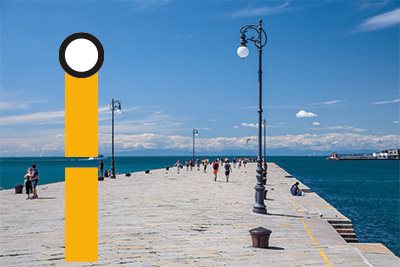
A route for those with little time and lots of curiosity, this is a synthesis of places, architectures and landscapes that tells of the historical events that took place there, of the communities that inhabited it and the artists, scientists and traders who worked there and of the writers who recounted it.
triestemetro.eu/itinerari/itinerario/2/trieste-in-un-giorno
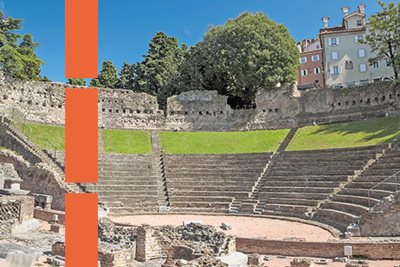
From Roman Tergeste to the medieval village and on to the long Hapsburg era, between the “dedication to Austria” of 1382 and the arrival of Italy in 1918, passing through the development of the port in the 19th-century and up to the tragedies of the Second World War, Trieste has had a troubled and fascinating history.
triestemetro.eu/itinerari/itinerario/1/storico
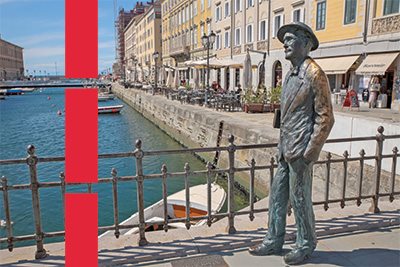
Places rich in history and contrasts produce more stories. At the beginning of the 20th-century with Svevo, Joyce, Saba, Rilke, Kosovel and Slataper, Trieste was one of the cradles of Modernism. Today it still continues, to inspire literature of the highest level in a range of languages.
triestemetro.eu/itinerari/itinerario/7/letterario
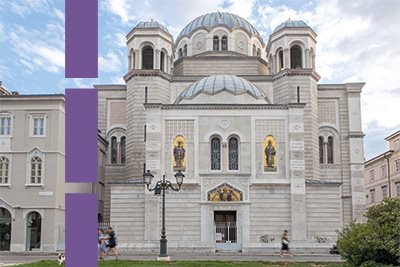
Various ethnic and religious communities flocked to Trieste during the 19th-century, attracted by the prosperity of the free port. Greeks, Serbs, Armenians, Albanians and Turks all joined the Italian and Slovenian natives, the Austro-Germans, the English and French as well as the prosperous Jewish community.
triestemetro.eu/itinerari/itinerario/4/comunit-culture-religioni
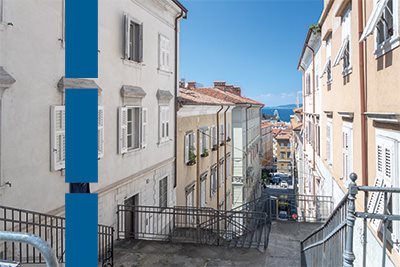
Trieste, the city of Strehler and the theatres, is very passionate about cinema, music, and art but it is also the city of Ressel, the inventor of the propeller and of the Ursus, a gigantic crane. It is the city of science, of psychoanalysis, and the psychiatrist Basaglia. How to discover all this at the same time? With this itinerary!
triestemetro.eu/itinerari/itinerario/6/scienze-arti-tecnologia
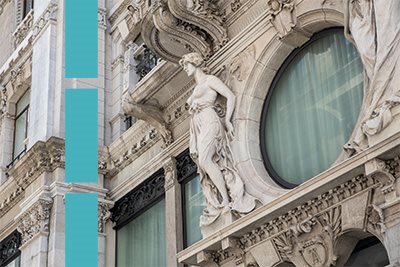
It is said that in Trieste, the city where Winckelmann was murdered, the prevalence of the Neoclassical is a kind of compensation. In truth, here you can also appreciate interesting examples of Art Nouveau architecture as well as Eclecticism and Rationalism, all using a wide range of decoration and building materials.
triestemetro.eu/itinerari/itinerario/3/architettonico
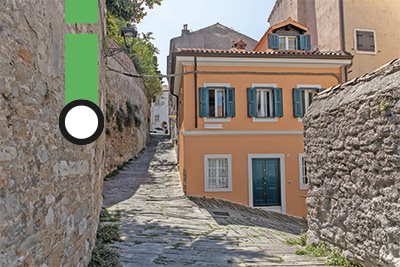
Boasting the sea with its famous bagni or bathing beaches, the city with its parks and the Karst and its caves, Trieste offers a unique range of natural phenomena, such as the Bora wind. The city also offers distinctive ways to enjoy them including sailing, climbing, caving, and swimming, not to mention its evocative panoramas and famous sunsets.
triestemetro.eu/itinerari/itinerario/5/naturalistico-sportivo

risorsa